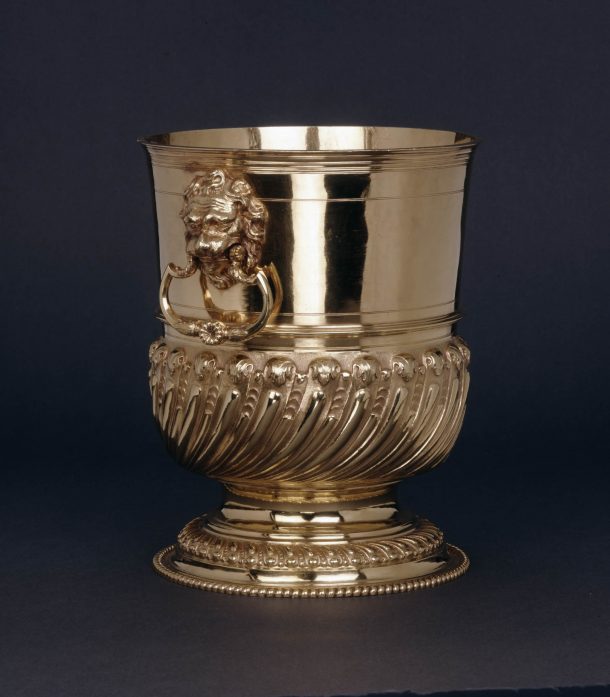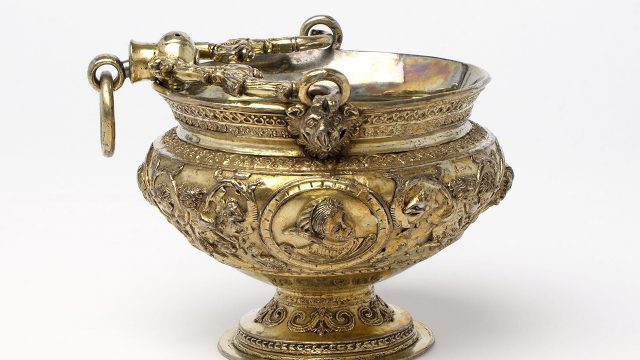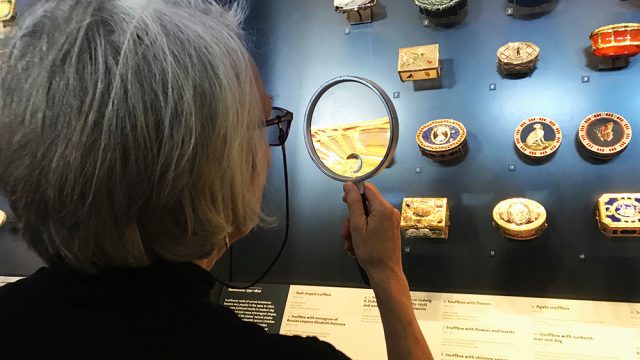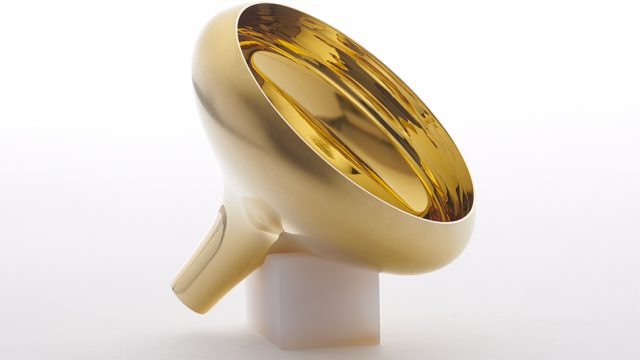On 17 April 1703 the London newspaper The Post Man advertised French wine from a West-end goldsmith’s cellar:
In Suffolk Street near the Meuse (sic) under the House of Mr Harache Goldsmith … good claret at 4s per Gallon, some other better at 5s White wine 5s 6d, Canary, Bordeaux and French Claret at 8s per Gallon and right excellent wine at 9s per Gallon.
The proprietor Pierre Harache, first generation Huguenot (French Protestant) goldsmith from Rouen, ‘lately come from France to avoid persecution’ registered his first English Sterling mark with the Worshipful Company of Goldsmiths 21 years earlier in 1682 after making a payment of £10 by order of the Court of Aldermen of the City of London. In 1697, when entering a new maker’s mark (using Britannia standard alloy with a higher silver content), Harache gave his new address in Suffolk Street.
From 7 September 1701 Britain was at war with France. The War of the Spanish Succession continued until the Peace of Utrecht was signed in April 1713; during those twelve years importing wine from France was illegal. Yet supply continued through London-based Huguenot wine merchants and others who used their network of contacts to smuggle supplies through Dunkirk or import via Amsterdam, Antwerp and Livorno through Huguenot merchants in Dover and Southampton.
Despite official persecution of Protestants in France, an underground network was sustained through the taverns of Protestant wine shops in Paris where private rooms hosted secret religious gatherings. Wine-shop keepers were inter-related and came from wine-producing regions including Berry and Sancerre. The household accounts of Ralph, Earl of Montagu, record payments to London-based Huguenot wine merchants Jacob Coutois and John Gachon for Bordeaux, Peter Hatanville for French white wine, David Godin for claret and Anthony Reilhan for Canary; Reilhan charged Montagu £4 on 31 May 1703 ‘for a Silver Craine to draw wine’ demonstrating close links to London-based silversmiths. Montagu’s dining room buffet at Montagu House, Bloomsbury, was by then furnished with paired silver wine fountains and cisterns supplied in 1701 for £129 15s by Huguenot goldsmith David Willaume originally from Metz, but by 1697 established in fashionable Pall Mall.
On 31 March 1705, Montagu’s son and heir John Monthermer married Mary, youngest daughter of John, 1st Duke of Marlborough, then commanding the British Army against the French. Marlborough’s London home Marlborough House, St James’s was furnished with even grander gold and silver plate acquired through royal gift and his embassy to the States General in 1701. This can be admired today in the British Museum and at Althorp, Northamptonshire, where it descended through the marriage of his second daughter Anne (Marlborough had no male heirs). In 1714, Marlborough acquired another silver heirloom from his brother General Charles Churchill, a fellow officer, who fought alongside the Duke at the Battles of Blenheim and Ramillies and became Governor of Brussels, Colonel of the Coldstream Regiment of Foot Guards and Governor of Guernsey. This silver pilgrim bottle, engraved with the coat of arms of both Churchill brothers was made around 1710 by Pierre Platel, David Willaume’s Huguenot neighbour in Pall Mall. Platel, came from Lille via Flanders in the train of William III.

Free of the Goldsmiths’ Company in 1699, Platel is remembered today as the master of Paul de Lamerie who joined his household on 6 August 1703. Like Harache, Platel worked in gold as well as silver; for William Cavendish, 1st Duke of Devonshire, Platel supplied in 1701 a gold ewer and basin – Platel’s masterpiece – exquisitely engraved with the Duke’s coat-of-arms and stag supporters. For the same patron, Platel made a gold cup and cover of 1717 – 18. Either Harache or Platel may have supplied the gold ice pails, made around 1700 in the British Museum given to Marlborough for his embassy to the States General in 1701.

To celebrate the peace with France in 1713, Queen Anne, who succeeded William III in 1702, presented Sir John Walter with a silver wine fountain, marked for Pierre Platel in 1713 – 14. The fountain is engraved with his coat of arms and those of his second wife Elizabeth, daughter of Sir Thomas Vernon.

Sir John served as Clerk of the Green Cloth from 1711 – 16. His will records his ‘earnest desire’ that the silver wine fountain that Queen Anne presented him ‘in acknowledgement of his services to her household’ should be retained at his residence at Sarsden, Oxfordshire and ‘perpetually preserved in remembrance of duty and gratitude to her said late Majesty and of the honour I bear to her memory’.
Lady Marjorie Gilbert reminded us that Sir John Walter’s wine fountain was Sir Arthur’s last acquisition of silver, so it is appropriate that this is displayed in the Rosalinde and Arthur Gilbert Galleries at the V&A in 2019, the tercentenary of the death of Pierre Platel, the distinguished Huguenot goldsmith who supplied this splendid royal gift that celebrates the peace established between France and England in 1713 – 14.


